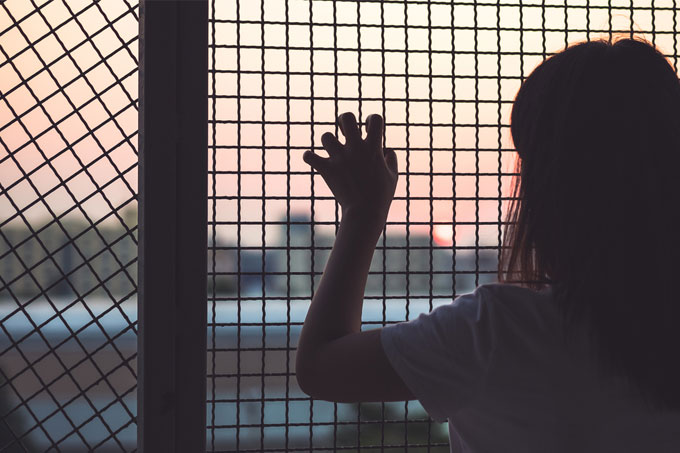Dr Demetris Hadjigeorgiou, Lecturer in Applied Criminology, calls for more public debate and understanding on this widespread crime.
If someone asked you a question about the nature and scope of human trafficking in the UK, you’d be forgiven for drawing a blank. Or at best, muster together something you vaguely remember reading or hearing about it in the media. Perhaps something to do with packing people onto the back of lorries and trying to get them into the country illegally? Or something about the suffering of women being forced to work in the sex industry, maybe?
So what is human trafficking? At the simplest level, it involves holding or facilitating the movement of people, in a non-consensual way, for their exploitation e.g. forced labour or the exploitation of prostitution. The non-consensual elements can involve violence, but can also take non-violent forms, e.g. deception or exploiting someone in a vulnerable position. And in actual fact, human trafficking is much more common than many people think – and occurs closer to home than many people realise.
Last year, according to the National Crime Agency, 3266 people were referred as potential victims of human trafficking and slavery into the National Referral Mechanism (NRM). This is the UK’s framework for identifying and supporting such victims (the terms slavery and human trafficking should not strictly speaking be used interchangeably, but in the UK at least, most victims of slavery have been trafficked, meaning most referrals into the NRM involve trafficking cases).
But this tells only part of the story, for as is the case with most crimes, many victims go undiscovered or unreported, and the Government estimates there are approximately 13,000 victims of human trafficking in the country – a number which is seen as an underestimate by certain agencies involved in the field.
In terms of where it is taking place, many victims are women whose sexual labour is exploited. Last year about 800 such women were referred as potential victims into the NRM. But equally, victims of all genders and of all ages, including children, are to be found in many industries: nail parlours, car washes, in homes as domestic servants, on farms; there has even been a case in an Embassy in London.
All this means it is vital that human trafficking gains greater attention and understanding amongst the public. We can all be more aware of certain signals associated with its victims, and so potentially help them – something many institutions working in the field would like to happen. But apart from this, the greater the level of public awareness on the issue, the more it creates an environment in which human trafficking is taken seriously and combatted more effectively. And this appropriate response does not simply involve finding and helping more victims. It also involves thinking about the political and socio-economic context in which trafficking takes place, such as the global inequalities which lead to the conditions in which people can become its victims; how trafficking is affected by prostitution policy, and how migration legislation can fuel it. More public debate and understanding is needed on this highly complex and widespread crime.
 Expert comment
Expert comment Jeanette Earl
Jeanette Earl 1469
1469


